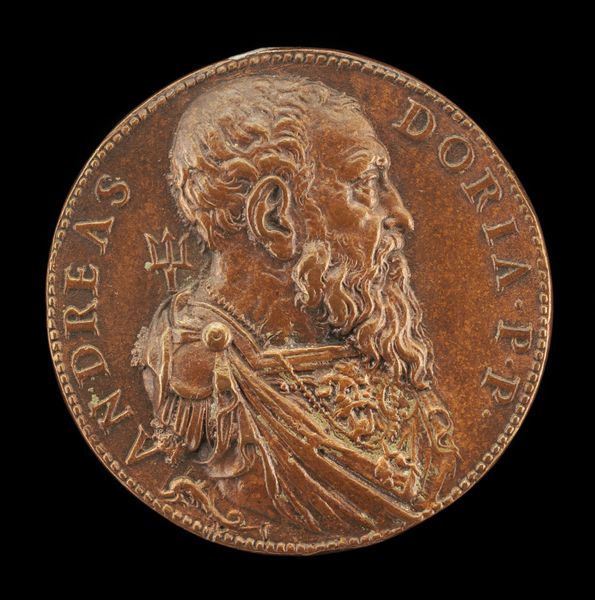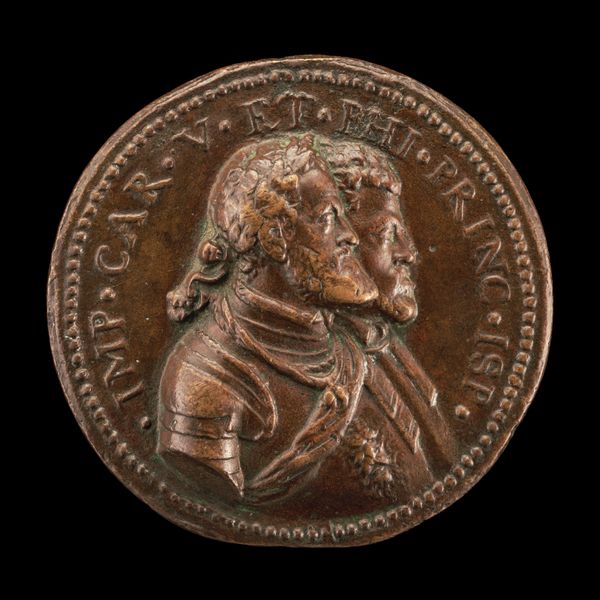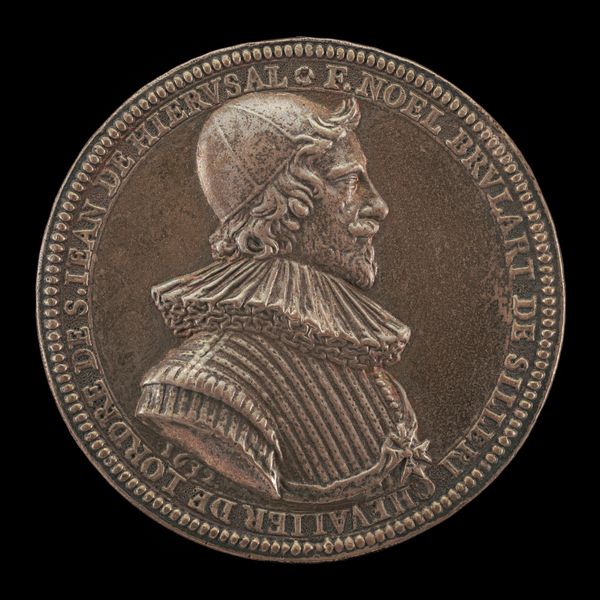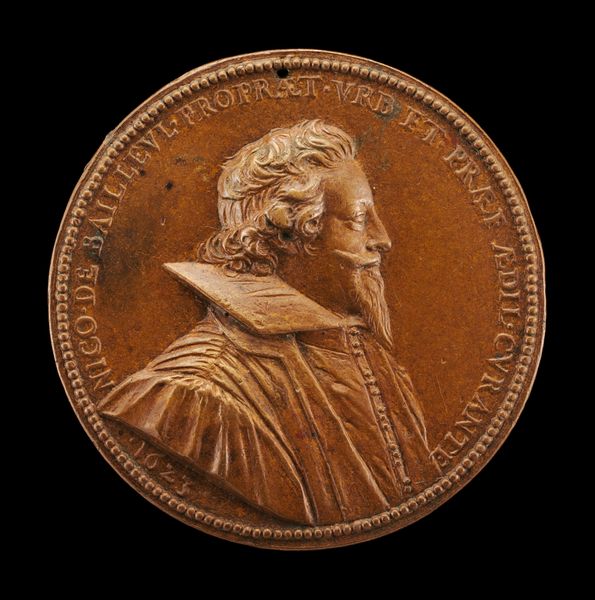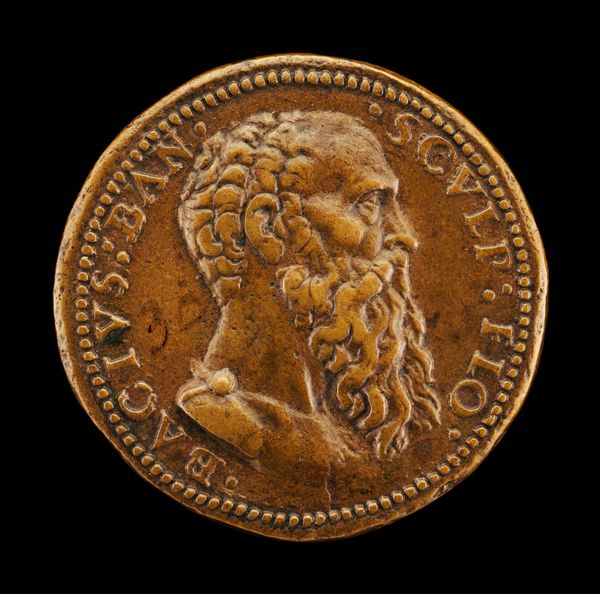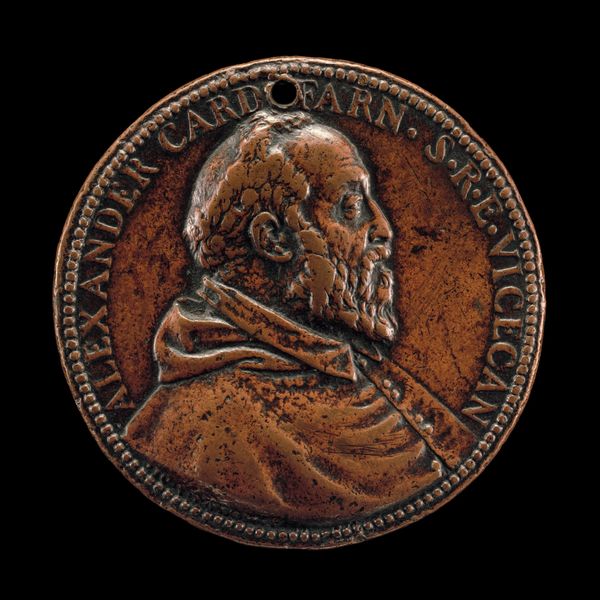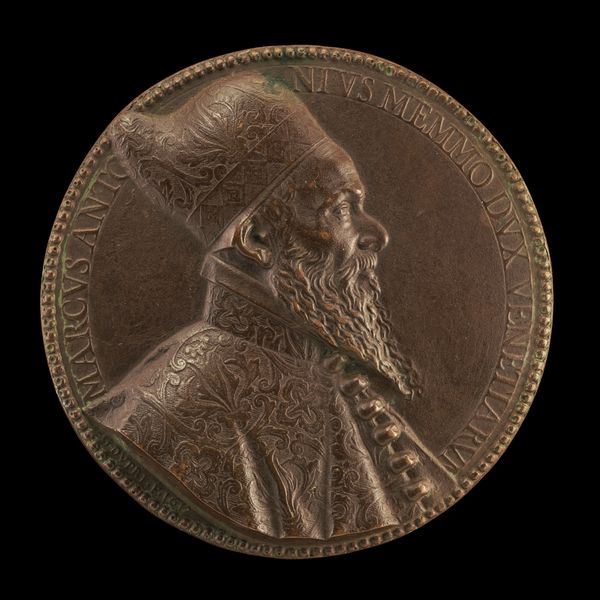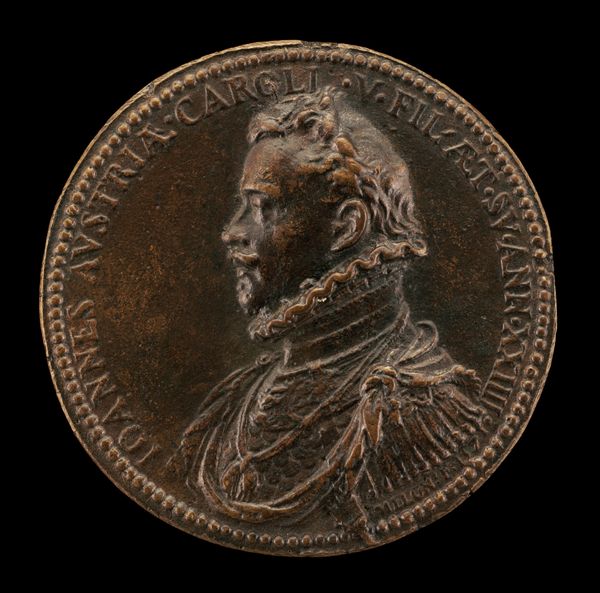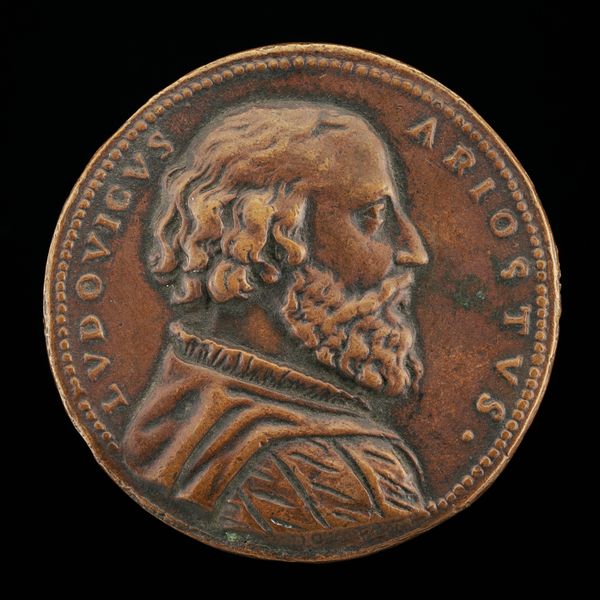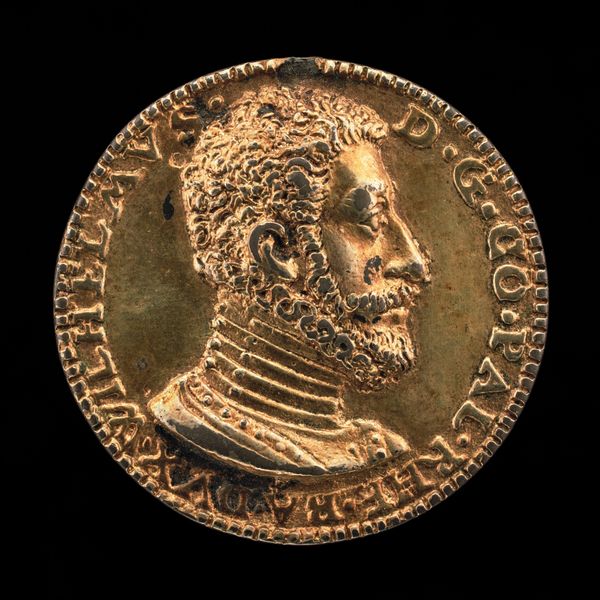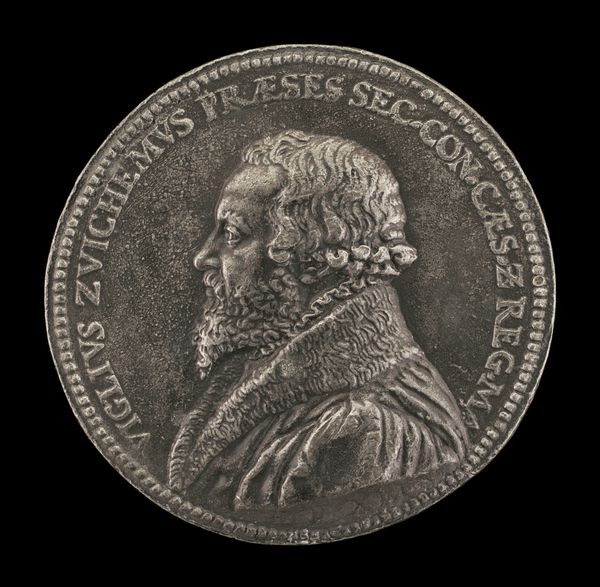![Charles de Valois, 1573-1650 [obverse] by Guillaume Dupré](/_next/image?url=https%3A%2F%2Fd2w8kbdekdi1gv.cloudfront.net%2FeyJidWNrZXQiOiAiYXJ0ZXJhLWltYWdlcy1idWNrZXQiLCAia2V5IjogImFydHdvcmtzL2RkY2MwZmQ1LWE3ODYtNDA3Yi04ZGEyLTlmMTkwMTRmNmUzOC9kZGNjMGZkNS1hNzg2LTQwN2ItOGRhMi05ZjE5MDE0ZjZlMzhfZnVsbC5qcGciLCAiZWRpdHMiOiB7InJlc2l6ZSI6IHsid2lkdGgiOiAxOTIwLCAiaGVpZ2h0IjogMTkyMCwgImZpdCI6ICJpbnNpZGUifX19&w=3840&q=75)
metal, bronze, sculpture
#
portrait
#
medal
#
metal
#
sculpture
#
bronze
#
11_renaissance
#
sculpture
Dimensions: overall (diameter): 4.3 cm (1 11/16 in.) gross weight: 21.57 gr (0.048 lb.) axis: 12:00
Copyright: National Gallery of Art: CC0 1.0
Curator: This bronze medal, created by Guillaume Dupré around 1620, portrays Charles de Valois. The obverse side, which we see here, presents a profile of the subject. Editor: There's a tactile quality that just leaps out. You can almost feel the weight and coolness of the bronze in your hand, it exudes power and status. Curator: Absolutely. Notice the crisp lines defining Charles's features, the intricate detail of the ruff, and the flowing drapery of his clothing. The artist uses light and shadow to create a sense of depth and volume. Editor: Considering the context of its making, bronze casting would have been an artisanal, collaborative affair, blending sculptural skill with metalworking techniques and intense labour. Curator: Precisely. The circular form itself functions as a kind of frame, drawing the viewer's eye to the meticulously rendered figure. It almost possesses a classic heroic aura. The Latin inscription encircling the portrait adds a layer of formality and prestige, too. Editor: And beyond the form, we should think of the process. Molten metal, skilled hands crafting the mold – an interplay of elements, almost alchemical, reflecting the power and influence Charles embodied. I wonder, what happened to the mould afterward, did they melt the mould to preserve the original? Curator: Fascinating point, this medallion clearly functions as a vehicle of political image-making. It reduces its sitter to the smallest set of formal visual cues in a reduced relief; it signifies wealth, power and nobility. Editor: I appreciate how this small object captures so much, not just of a person but of the labor, material, and social values embedded within its creation. Curator: Indeed, it prompts us to reflect upon the artist's intention and the historical and cultural context of 17th century France. Editor: Absolutely. And maybe too, that in making it and observing it, we all play our parts.
Comments
No comments
Be the first to comment and join the conversation on the ultimate creative platform.
